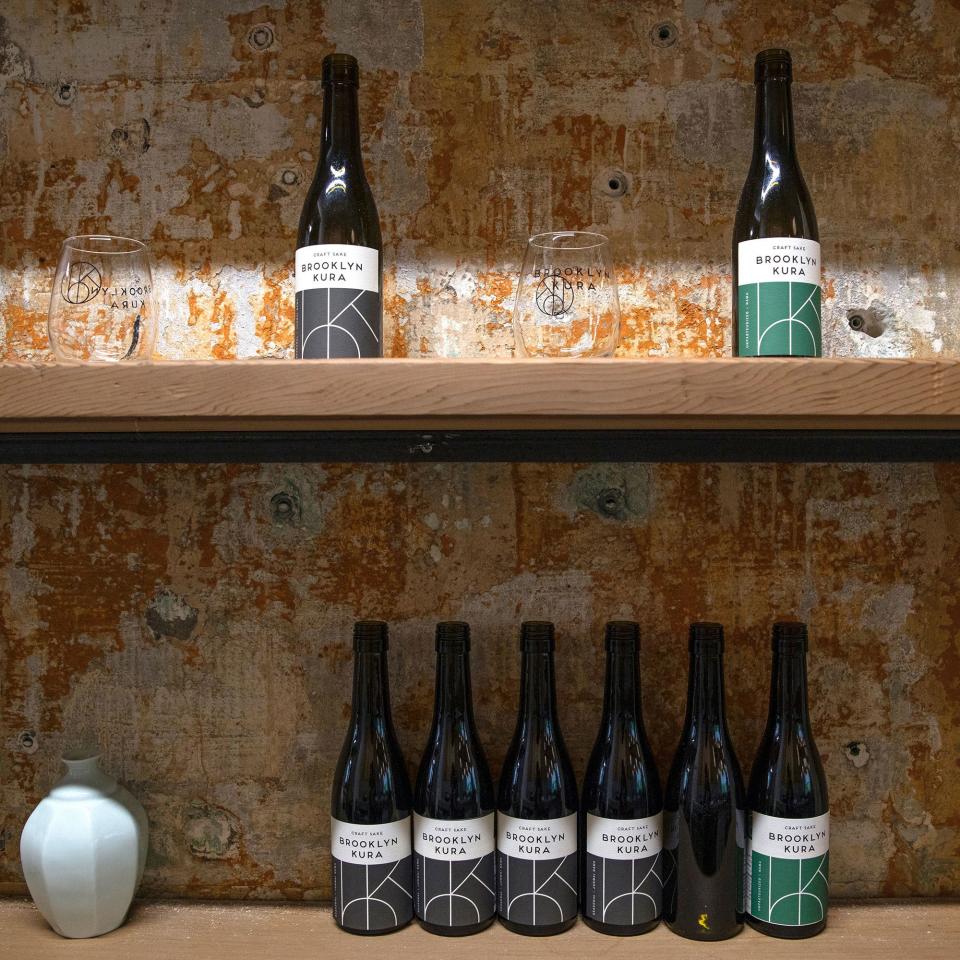New York’s First Sake Brewery Considers the Art of American Rice Wine
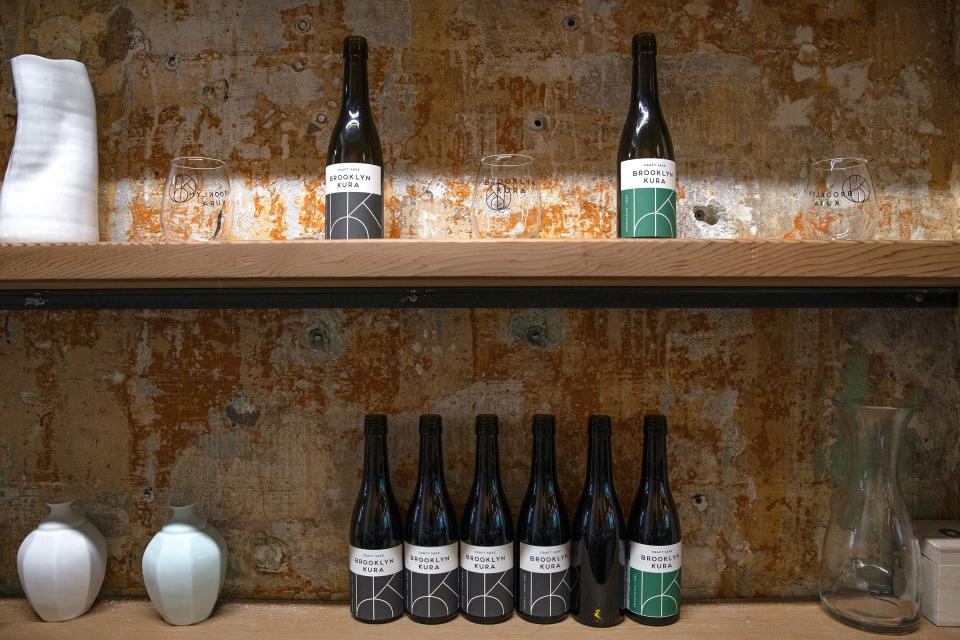
“We’re not trying to pretend that we’re making traditional Japanese sake,” Brandon Doughan, the co-founder of Brooklyn Kura, the first sake brewery in New York, told me on a recent Friday morning, as soft light diffused through the elegant tasting room. “We’re using American ingredients. We’re using Brooklyn water. We want to do our own thing here, and just see what arises out of what we’ve got.” Entering the space dispels one’s notions about sake bars, which in New York City tend toward the clandestine: low lit, snug, difficult to locate. Instead, Kura exudes openness: the space is airy and bright, the decor more Memphis than Kyoto. The sake is served in white wine glasses, rather than obscured within ceramic cups or wooden masu boxes.
Doughan had spent the morning steaming Yamada Nishiki rice, to prepare it for the sake-making process. A faint eggy smell rose from the enormous metal barrel that held the grains "You get that sulfur smell when you first start steaming the rice as the proteins begin breaking down. Steaming also gelatinizes the starch, making it accessible to the koji." I eventually came to expect this kind of chemical commentary from Doughan, who previously worked as a research scientist, developing drugs for heart disease and cancer. He is enthusiastic about the science behind the process of sake production, which is complicated compared to wine and beer. Rice wine production requires growing the mold aspergillus oryzae (commonly known as koji) onto rice. The process, which is time-consuming and requires steady attention, converts the grain’s starches to sugar.
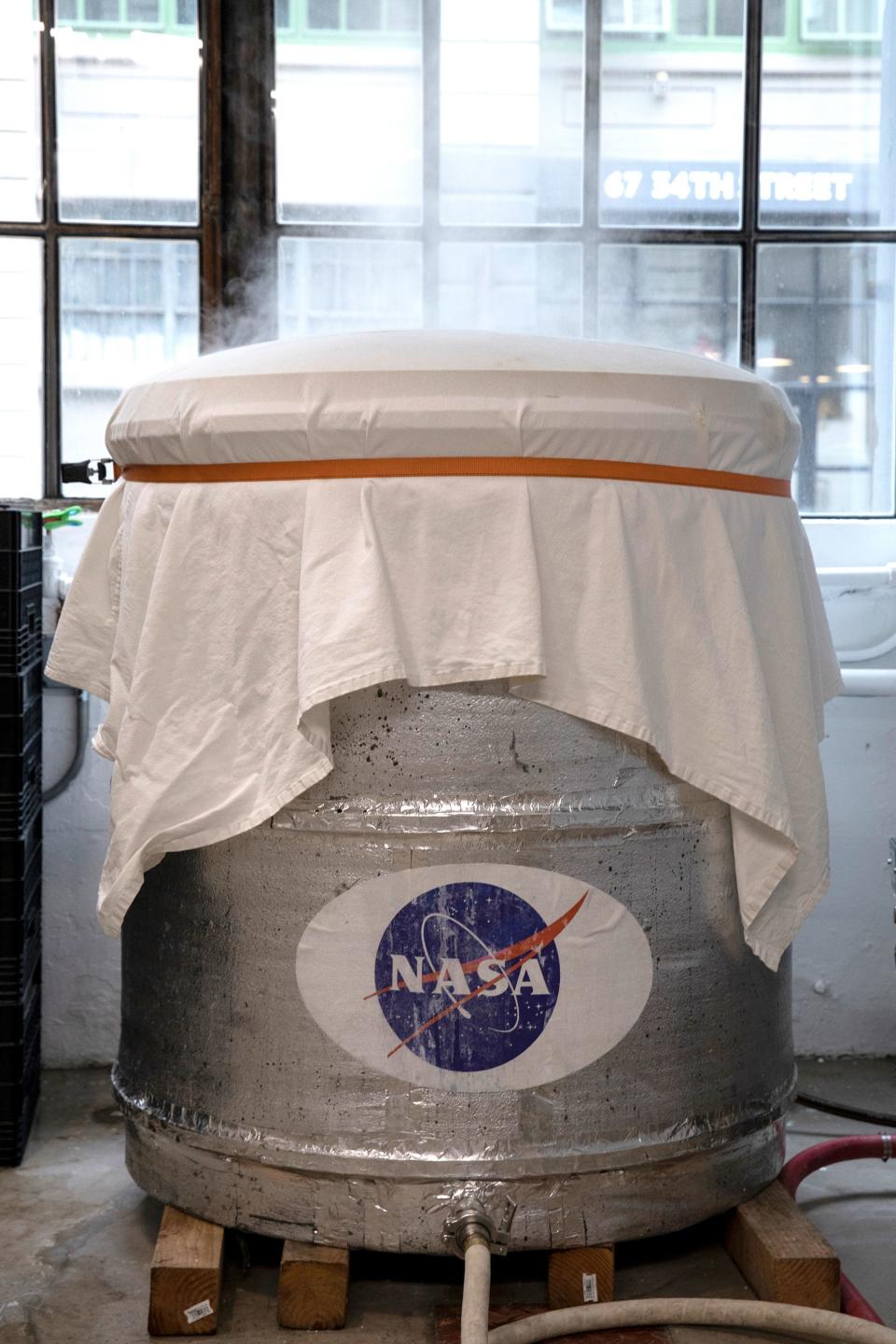
Homebrewing had long been a hobby for Doughan, who considered it a refuge from the “strict logic” of his previous day job, yet he rarely considered doing it professionally. Nor had he ever brewed sake, seriously. But in 2014, kismet intervened at a wedding that he attended in Japan, where he met Brian Polen, who would later become his partner in opening Kura. They were quick friends, bonding as they tasted sake at a traditional brewery during their trip. Back in the States, they spoke frequently on the phone (Doughan lived in Portland at the time; Polen in Brooklyn) and attempted to brew sake in their respective homes. Sometimes, they would fantasize about opening up a sake brewery together. “It’s hard to describe but it just started becoming more real,” Doughan said. Polen began to send Doughan spreadsheets, outlining business models, and before long, they had acquired funding from investors and quit their jobs. Doughan moved to Brooklyn, and after a little under a year in a small lab in the Pfizer building in Bushwick, they opened shop in Industry City.
When the rice was ready, Doughan spread it out onto a twenty-foot stretch of cloth-lined bamboo blinds. He turned the rice with his hands, cooling it down to the right temperature for koji growth. Steam swirled around him as he worked his way through the rice, which unfurled like a carpet down the length of the brewery floor. Watching him, my mind reeled to consider the challenges involved in learning to produce sake and build a brewery with few references in the States—not to mention that neither Doughan nor Polen speaks Japanese. “All I do is pore over textbooks and plug all sorts of things through Google Translate and just constantly try to learn as much as I can,” he said.
But the longer Kura has been open, the more Doughan and Polen have become embedded not just in New York’s sake community, where their wines are served at classic Japanese establishments like Decibel and Sakagura, but also in Japan, where reception to Kura’s sakes has been overwhelmingly positive. Tojis—master brewers—from Japan often visit the brewery on their trips to New York, and are reliably impressed with Kura’s process and product. Doughan attributes the response to Kura’s thoughtfulness about their operation, how deeply they care about respecting traditional Japanese sake processes and styles, and the sheer fact that they are brewing sake outside of Japan at all. But he’s also optimistic about the ways in which Kura diverges from tradition. “I think that we will be different and that’s okay,” he said. “My perception is that there were vintners in Napa Valley that were really trying to do French wine, but something else evolved out of that, something distinctly American.”
Eventually, the rice became cool enough to inoculate with koji, and Doughan scooped it, bucket by bucket, into a tiny enclosed room where it would sit, growing mold for around 48 hours. By the second evening, the rapidly growing aspergillus oryzae, white and fuzzy, begins to produce enough heat to kill itself. So Doughan spends the night curled up in a sleeping bag on top of the room, waking up periodically throughout the wee hours to cool it down by mixing it and spreading it thinly.
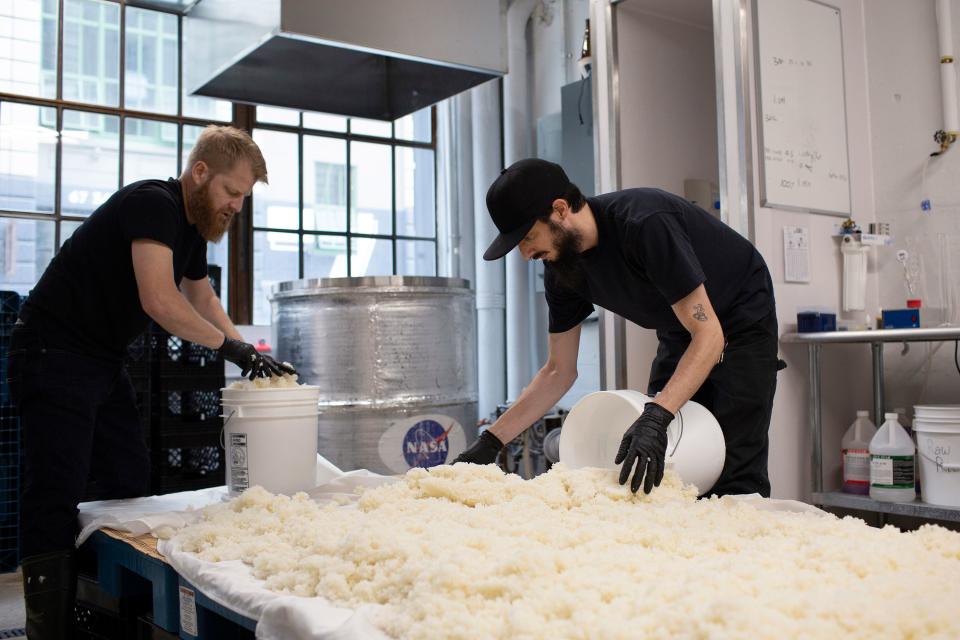
Perhaps it shouldn’t surprising that there is so much Japanese interest and support for Kura, because, well, the sake is terrific. (Try the #14 for something clean and bright, or their “Occidental,” line for something a little funkier; at least one is brewed with citra hops, which gives the sake a rosy pink hue.) But also because consumption of sake in Japan is on the decline—sales have decreased 30 percent since 1974, so brewers are looking outside of the country for new markets. “One of the things that I see with every conversation with Japanese distributors and Japanese retailers...is there’s a real belief that for sake as an industry to succeed, it’s going to take advocacy outside of Japanese society,” Polen told me later that afternoon, while the rice rested in the koji room.
I asked him what, in particular, he thought made Kura’s sake distinct, or even American. “From a production standpoint, there’s a lot of tradition involved with every decision made in a brewery, in Japan,” he said. “I mean, if the first iteration of your sake is from the 18th century, moving the needle is a little bit more difficult.” Kura, free from the pressure of a traditional background, can be more flexible to invent and to experiment, he explained. That freedom invites a lot of curiosity about identity and authenticity, from journalists of course, but also from brewers who visit from Japan. While Doughan and Polen are grateful for and receptive to guidance from traditional brewers, they are wary of adopting anything that feels insincere or inauthentic to themselves.
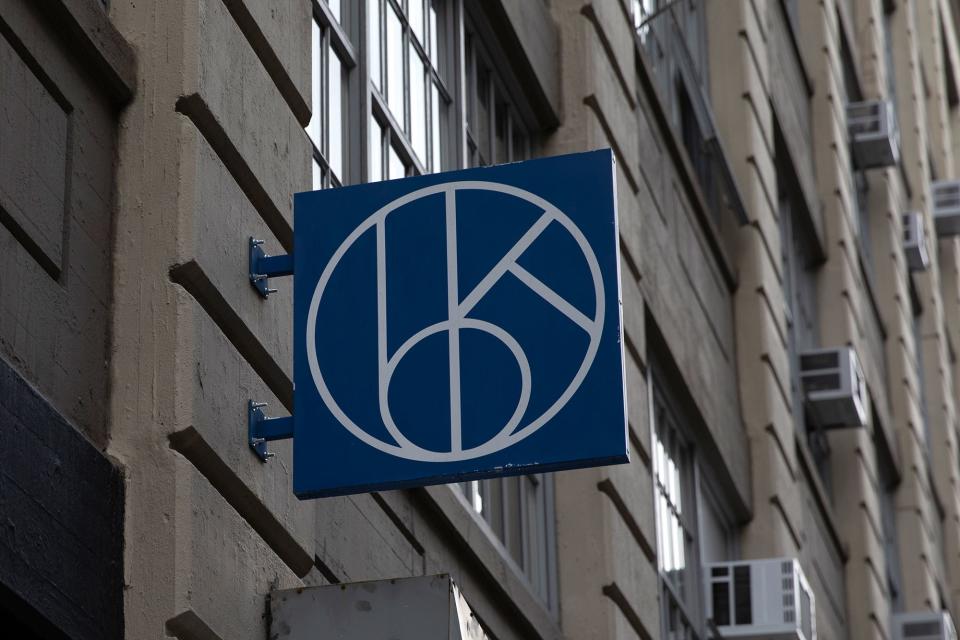
“Sometimes they ask why don’t we have a shrine or a sugidama, which is like a ball of pine fronds that changes from green at the beginning of the sake season and becomes brown by the end when the sake is ready,” Polen said. “The shrine is like a…” he paused. “...again, I don’t know, right? Like I’m not going to do things that I don’t know. I would never be sensitive enough to recognize the complexities surrounding those rituals.” As he spoke, I found myself contemplating the slipperiness of authenticity, how that designation so easily shifts depending on who you are, where you’re from. It would, perhaps, feel awfully disingenuous for Kura to replicate the complicated traditions of a historic sake brewery, outside of its historic context. Worse yet, an adherence to perceived authenticity might limit the opportunities that come with reinterpretation.
I asked Polen if Kura had developed some rituals of its own over the past two years, and he paused for a moment to consider. “I guess our ritual is just we’re open and honest and direct about what we do, and have confidence in it,” he said.
As we chatted, Masahiko Takeshita, a Japanese brewer and friend to Kura wandered into the tasting room. Takeshita told me he was training as a brewer for his family’s sake brewery in Shimane prefecture, in the western part of Japan. His is a small traditional brewery that has been open for 150 years. “Same age as the Statue of Liberty!” Takeshita said with a smile. He told me that Kura was a must-see for many Japanese brewers who visit New York City. “White people making sake is kind of interesting for us,” he said, laughing. But he added that he liked coming to Kura, because he felt that it was unique. “I get inspired by Kura to be flexible, to not be afraid of changing tradition.”
